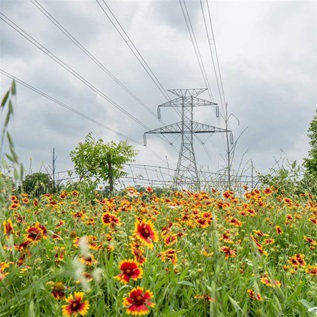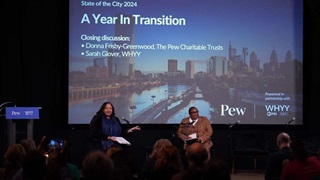Will Antarctica’s Song Survive?
Conservation harmony could save the Southern Ocean’s symphony from mounting threats

Antarctica and the Southern Ocean—with their abundant wildlife, pristine nature, and vital role in regulating global ecosystems—are like a symphony: All the parts must work together to produce a harmonious whole. This is especially true in the Southern Ocean, with the small-but-mighty krill at the center of a complex food web that has formed over millennia and includes penguins, whales, seals, and seabirds; massive, cold circumpolar currents that shuttle nutrients around the planet; and vast ice sheets that help with global climate control.
In fact, visitors often marvel at the “music” that the Southern Ocean’s ice and animals make, performers in the world’s most remote theater.
If the Southern Ocean is a concert hall, then krill, a pivotal pinky-sized crustacean, are center stage, nourishing an array of species.
By orchestrating the flow of nutrients and regulating the climate around the world, the currents of the Southern Ocean provide something like a tempo and rhythm—with the Antarctic Circumpolar Current, which encircles the continent, connecting ecosystems and influencing global climate patterns, comparable to a conductor, directing the movement of energy and the entire symphonic ensemble.
But just as a discordant note can throw off a symphony, multiple threats are disrupting the harmony of the Southern Ocean ecosystem. Climate change, overly concentrated fishing, and pollution are among the key challenges facing this pristine wilderness.
In particular, the Antarctic Peninsula, a hotspot of biodiversity, requires urgent attention. Along the western side of the peninsula, increasingly concentrated commercial krill fishing is throwing the Southern Ocean out of tune. Krill in this region are the primary food source for multiple species of penguins, including Adélie, chinstrap, and gentoo. Recent research has shown that this localized depletion of krill, combined with climate change, is driving negative impacts on penguin health and vitality and declines in many Antarctic Peninsula penguin populations.
Rising temperatures and melting sea ice also have the region off-key. The Antarctic Peninsula is among the fastest-warming areas on Earth, which is driving water temperatures up and sea ice coverage down—a particular problem for the krill that have adapted to the Southern Ocean’s cold waters and depend on sea ice to complete their life cycle. The survival of larval krill to adulthood depends on sea ice, which provides shelter and food for young krill.
Higher temperatures have already caused krill to shift the center of their distribution south, and climate experts believe krill habitat could shrink even further and potentially disrupt the development of krill eggs, causing populations to collapse by 2300.
Fortunately, harmony can be restored to the Southern Ocean through scientifically backed conservation actions. These include the establishment of marine protected areas (MPAs) coupled with precautionary ecosystem-based fisheries management (EBFM) in the waters adjacent to those MPAs.
EBFM is a holistic, systemwide approach that accounts for all the interactions within an ecosystem—for example, how fishing of one species will affect others that prey on it—rather than focusing only on the target species in isolation. It’s like a conductor who directs the entire orchestra—not just a single instrument.
Marine scientists overwhelmingly agree that combining MPAs and EBFM, in addition to good monitoring, control, and surveillance of MPAs, are essential to protecting the ocean’s biodiversity and making it more resilient to climate change. Around Antarctica, greater resilience would help marine ecosystems better resist and recover from shocks associated with changing ocean conditions and maintain the vital services the Southern Ocean provides to wildlife and people. Networks of MPAs, interspersed with areas undergoing EBFM, also bolster species’ resilience to climate change by giving them places to feed and breed without human interference, and the networks create protected pathways for species migrations and range shifts.
And in the same way that an orchestra relies on cohesiveness among musicians, effective conservation in the Antarctic Peninsula demands a collaboration among global leaders, scientists, and stakeholders. Members of the Commission for the Conservation of Antarctic Marine Living Resources (CCAMLR), the international body charged with conserving Antarctica’s Southern Ocean, must drive effective, harmonized conservation.
And at its 2023 annual meeting, CCAMLR did in fact reach consensus to develop an MPA proposal for the Antarctic Peninsula, in concert with its new EBFM approach for the krill fishery in the heavily fished region. CCAMLR will hold a symposium in July 2024. The symposium provides members with the opportunity to summon the needed ambition to set a clear pathway toward designation of the Antarctic Peninsula MPA and improved management of the krill fishery to lessen impacts on predators.
By harmonizing conservation measures such as MPAs with sustainable fishery management practices, CCAMLR members can demonstrate global leadership—and preserve the Southern Ocean as a natural masterpiece for generations to come.
Nicole Bransome is a senior officer and Nicholas Kirkham is a senior associate with the Pew Bertarelli Ocean Legacy Project.
Spotlight on Mental Health
MORE FROM PEW
Explore Pew’s new and improved
Fiscal 50 interactive
Your state's stats are more accessible than ever with our new and improved Fiscal 50 interactive:
- Maps, trends, and customizable charts
- 50-state rankings
- Analysis of what it all means
- Shareable graphics and downloadable data
- Proven fiscal policy strategies
Welcome to the new Fiscal 50
Key changes include:
- State pages that help you keep track of trends in your home state and provide national and regional context.
- Interactive indicator pages with highly customizable and shareable data visualizations.
- A Budget Threads feature that offers Pew’s read on the latest state fiscal news.














